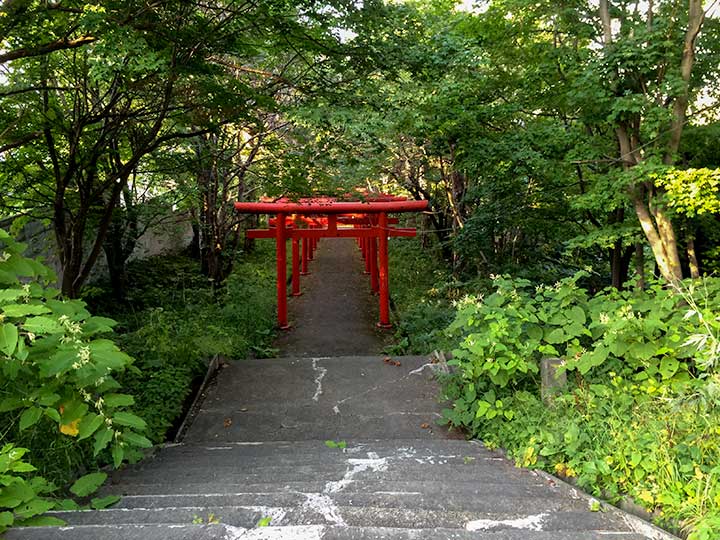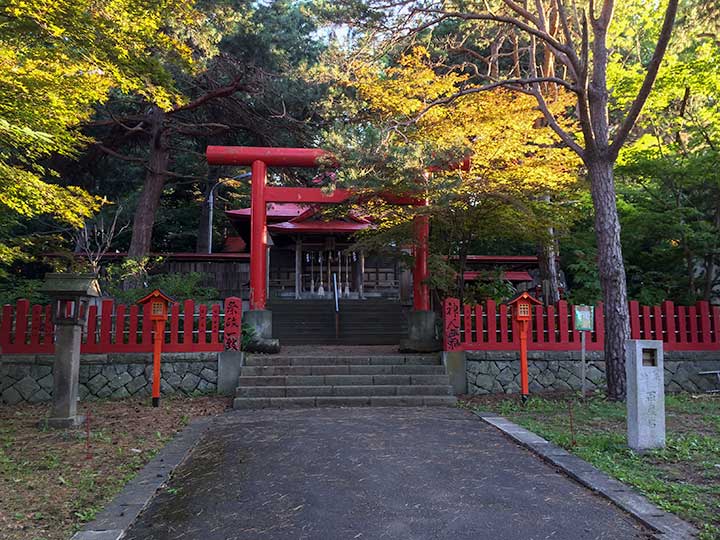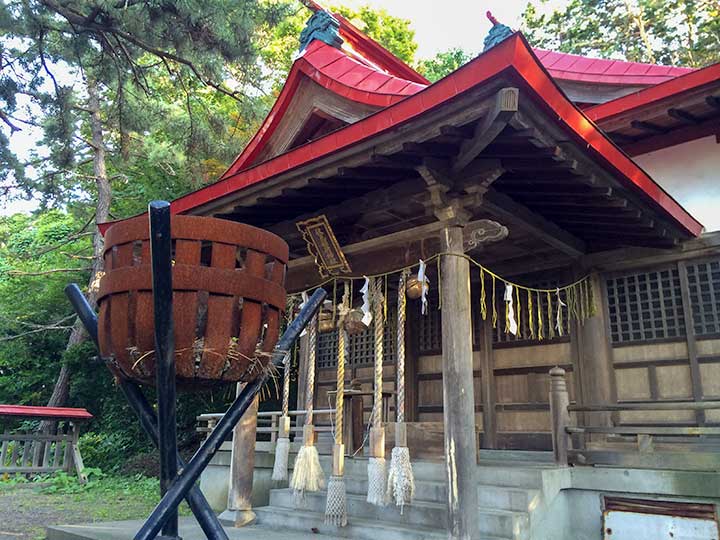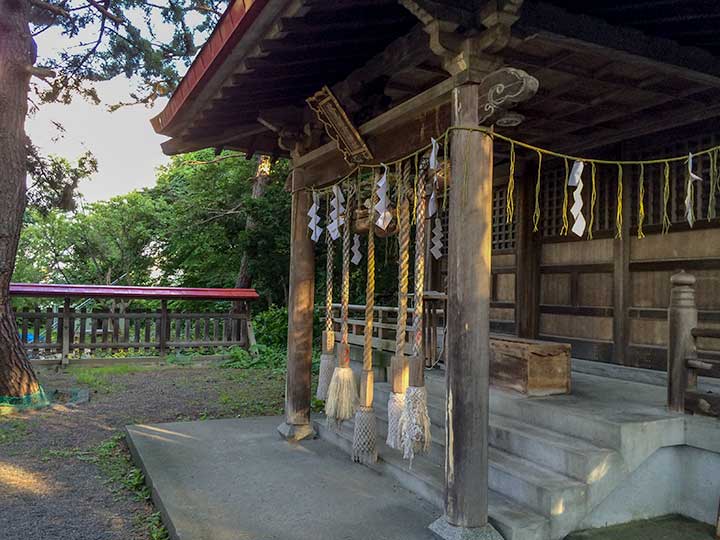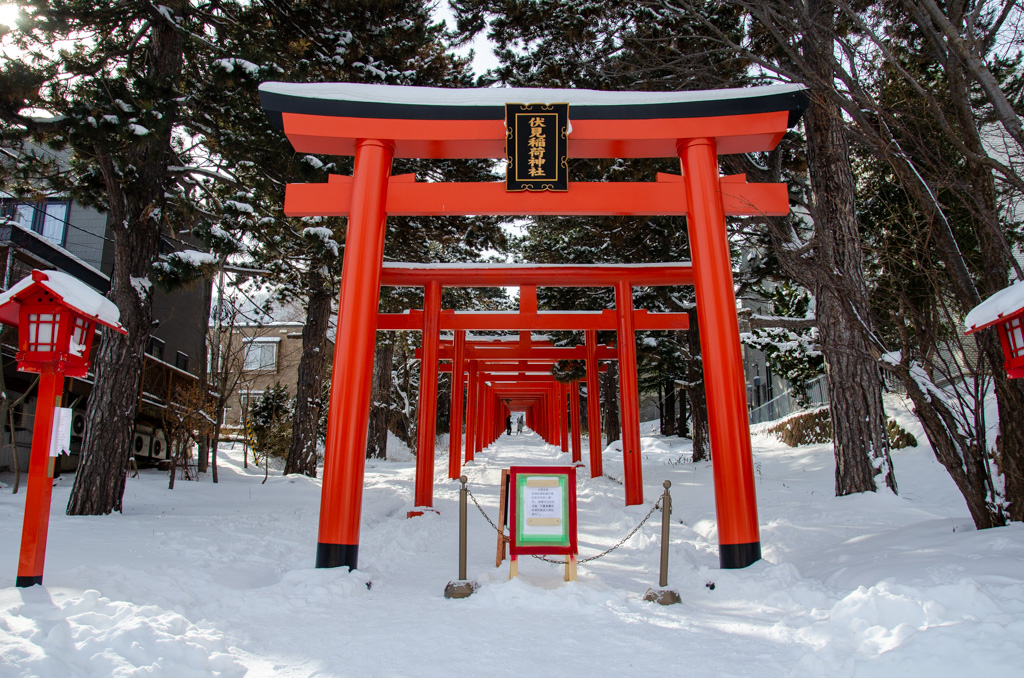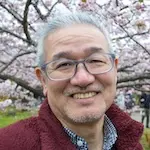For All Visitors, Please Read Before Visiting
The Fushimi Inari Shrine Office recently issued a request asking visitors not to take photos within the precincts of the shrine. This is quite unusual, as I have never heard of such a request at any other shrine. However, I did notice several signboards around Fushimi Inari Shrine emphasizing this point.
The shrine officials stress that this is a sacred place meant for prayer and worship, not merely a photo opportunity. The shrine is a space for both locals and visitors to pay their respects to the gods, and not a playground, even if the snow and slopes might seem inviting for children.
Unfortunately, some visitors often behave inappropriately, showing little understanding or interest in Japanese Shinto culture. This is akin to visiting the Vatican and behaving disrespectfully, such as chatting loudly or wearing unsuitable attire. Regardless of one’s understanding of the shrine or church, it is essential to show proper manners in these sacred spaces.
The shrine is part of a community where locals live peacefully, and it is primarily a place for prayer. Visitors should understand and respect Japanese Shinto culture, focusing on prayer and reverence before taking any photos. The shrine is not just a place for capturing photogenic shots.
I hope everyone who visits shrines can have a meaningful and respectful experience. While taking pictures is not inherently wrong, it is truly sad to see a lack of respect for the shrines, the gods, and Japanese Shinto culture.
Access
- Get off Tozai-line at Maruyama Park Station(円山公園駅) and transfer JR Hokkaido Bus[循環円10 or 循環円11] to Jikeikai-mae(慈啓会前) and 5 min walk.
- Get off Tozai-line at Maruyama Park Station(円山公園駅) and transfer JR Hokkaido Bus[円11 or 桑11] to Keimei bus terminal(啓明バスターミナル) and 10 min walk
- Take a streetcar to Nishisen 14 jo(西線14条) and 15 min walk
- 30 min walk from Maruyama Park station(円山公園駅)
- parking: 10 cars
Office open
- 9:00-17:00
- no close
- no admission fee
About Sapporo Fushimi Inari Jinjya
Sapporo Fushimi Inari Jinjya is located in the west-south of Sapporo called Fushimi(伏見) near Asahigaoka(旭丘). It is a branch shrine of Fushimi Inari Taisha(伏見稲荷大社) in Kyoto.
The Fushimi Inari was built at Kotoni village in the Meiji era 1898. After that, it was moved here in 1907. Annual festival is 9th September.
The shrine’s precious thing is the array of Torii(鳥居), Shinto shrine archway. Torii indicates the area where gods reside behind it, so to speak, a boundary between human being and god. In other word, it is a gate into the area where gods live.
The color of Inari Jinjya’s Torii is used to be vermilion. This color derives from full of life and energy over the century which is said to defend natural disasters. This affects Inari’s one. There are 27 Totiis in Sapporo Fushimi Inari Jinjya. Fushimi Inari Taisha in Kyoto has about 10,000 Toriis.
This area is one of the high-end residential area in Sapporo where is the south hillside place and you can see a very nice view of Sapporo. Asahiyama Park is close from here and Mt.Moiwa Ropeway is also close.
About The Five Gods
The shrine deifies five gods called “Ugano-mitama-no-mikoto(倉稲魂命)”, “Ooyamatsumi-no-mikoto(大山祇命)”, “Ookuninushi-no-mikoto(大国主命)”, “Kotoshironushi-no-mikoto(事代主命)”, “Amenouzume-no-mikoto(天鈿女命)”.
Ugano-mitama-no-mikoto is a bumper crop god which brings fortune as concerns business.
Ooyamatsumi-no-mikoto is a god ruling over mountains which means praying safety.
Ookuninushi-no-mikoto is a god for prosperous business.
Kotoshironushi-no-mikoto is a bumper crop god as well which brings fortune as concerns business and prosperous business.
Amenouzume-no-mikoto is a god for art and entertainment.
Recently it might be said a power spot for success of love among young. There are several items and goods for good-luck charm.
Negai Ishi(願い石), Wish Stone
Before worship, you are supposed to purify at Temizuya(手水舎) where you wet your hands and mouth with ladle. Take a dip in your mouth. No need to swallow it, just spit it out gently. Don’t touch a ladle with your mouth.
You will find a big stone right behind Temizuya called “Negai Ishi(願い石)” which means “wish stone”. It is said that the stone is alive and makes your wish come true if you want to.
But there is only one requirement you need to keep. That means you have to refrain something you like the most depending on how big you wish. There are many white charms aside the stone in which he or she writes down his/her wish and expense.
This is very unique and why don’t you try even if you don’t have any wish.
Neighborhood
There are some nice restaurants and cafes where you have some sweets. After Fushimi Inari, why don’t you go there. If you want to go Asahiyama Memorial Park, it takes about 20 min walk from here or 7 min by car.
Asahiyama Memorial Park
- 20 min walk from here or 7 min by car.
- See this article: Asahiyama Memorial Park: Another Sapporo Night View
- Snow and Autumn Leaves In Asahiyama Memorial Park
Moiwayama Ropeway
- 20 min walk from here or 7 min by car.
- See this article: Sapporo Night View from Mt.Moiwayama
- Enjoy Sapporo Night View, Moiwayama, Mt.Moiwa
